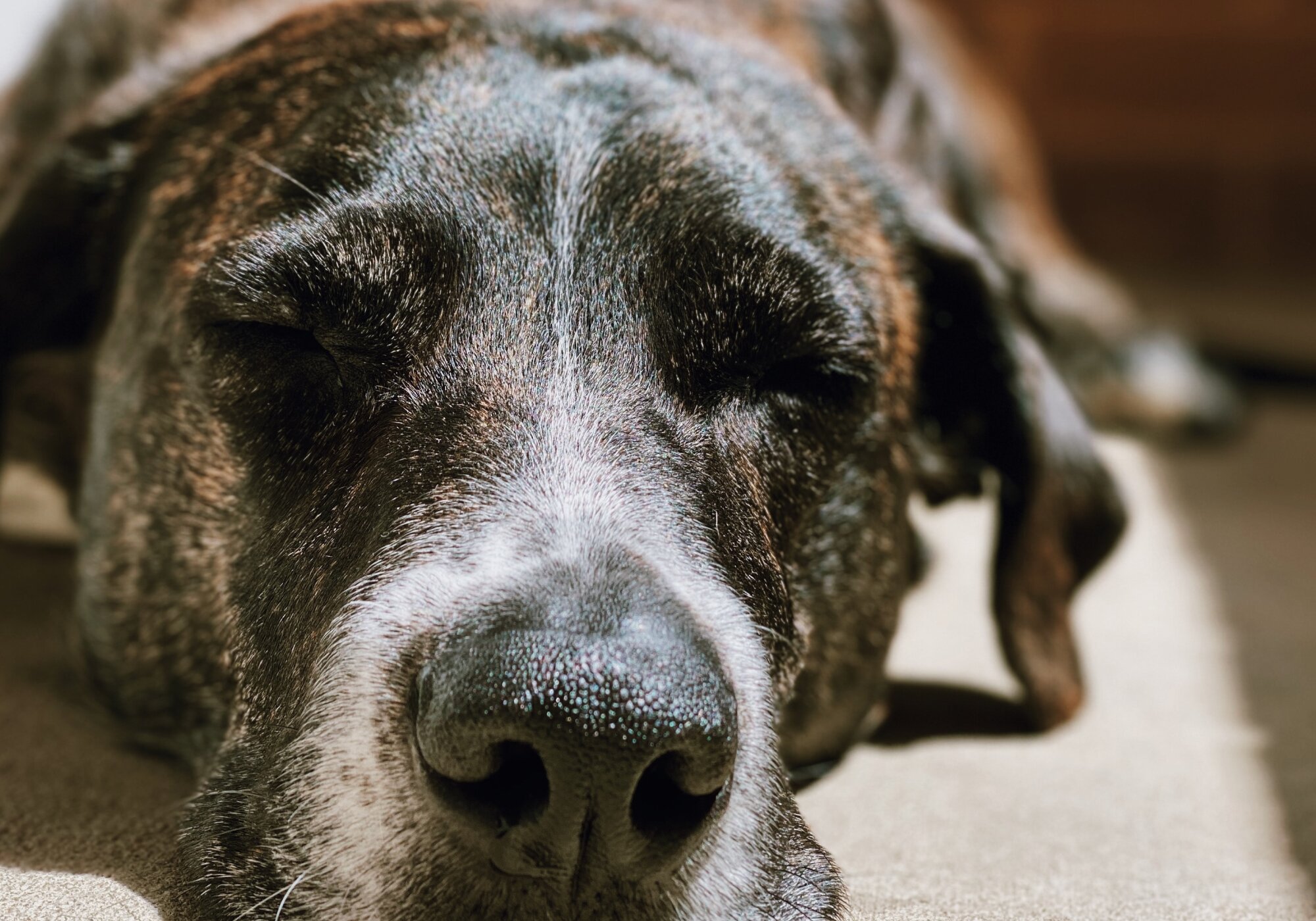Whether your dog's breed is susceptible to joint problems or they are simply getting older, there are many reasons why your dog may be experiencing joint pain. But, there are plenty of treatment options to help reduce your dog's symptoms.
For a quick fix, Galliprant, Carprofen, and Meloxicam are common medicines that can reduce inflammation in your pet's joints and provide relief. But, there are tons of wellness products and treatments available to dog owners.
From at-home remedies to physical therapy, there are many options to treat your dog's joint pain. Keep reading to better understand joint issues in dogs, plus 3 ways to relieve their pain at home.
How to tell if your dog has joint pain

Joint and hip problems can hinder your pet's quality of life. If your dog is suffering from sore joints, they may experience symptoms like:
- Painful inflammation
- Limping or trouble getting around
- Joint stiffness
- Loss of appetite
- Lethargy
Your dog’s symptoms may vary depending on the severity of their joint problem. Dogs experiencing lethargy and loss of appetite may be suffering from a more serious condition. So, be sure to visit your vet if your dog’s symptoms persist.
Dog breeds that suffer from joint pain

Some breeds are more likely to suffer from dog joint pain or develop arthritis than others. Giant and extra large breeds are especially susceptible to joint problems.
10 breeds that are likely to suffer from joint problems include:
- German Shepherds
- Golden Retrievers
- Labrador Retrievers
- Dachshunds
- Newfoundlands
- Saint Bernards
- Great Danes
- Rottweilers
- Mastiffs
- Old English Sheepdogs
If your dog is one of these breeds, talk to your vet about getting a physical examination for your pet. Your vet can tell you if your pup has joint problems at a check-up.
Knowing your pet’s breed is likely to develop joint problems won’t stop the symptoms from starting in the first place. But, it can help you stay on top of them before your dog develops irreversible issues.
Common causes of joint pain in dogs

There is no single cause of joint and hip problems in dogs. Dogs develop joint problems from aging, injuries, abnormal joint development, or changes in their body condition.
In some cases, joint and hip pain are signs of a more serious condition. Canine arthritis and degenerative joint disease are two common conditions that cause joint and hip problems in otherwise healthy dogs.
Degenerative joint disease
In a healthy joint, cartilage and tissue act as shock absorbers. When your dog has this disease, they have damaged connective tissue and cartilage.
As our pets get older, they are more likely to develop the disease. When this occurs, the cartilage around your dog’s affected joint can become loose. If left untreated, this condition can lead to arthritis and joint damage.
Canine arthritis
Canine arthritis is the largest cause of chronic pain for dogs. Arthritis commonly affects a dog’s hip, leg, and back joints through inflammation and degeneration.
Everyday movements and range of motion are difficult and painful for dogs with arthritis. But, your dog's arthritis shouldn't keep them from exercising. Help your dog stay active with low-impact exercise.
Dog arthritis is a progressive disease with no known cure. But, with the right treatment, most dogs with arthritis pain can live a long, fulfilling life.
Dog arthritis pain has no single cause, and is usually treated with many remedies. Nutrition, pain medication, and physical rehabilitation are the main treatments for early stages of dog arthritis pain.
Types of treatment for dog joint pain

If your dog's pain is severe, you may want to consider seeking medical treatment. But don't worry, many treatments for joint and hip problems are non-invasive.
Here are some common treatments for joint problems in dogs:
Physical therapy
Dogs with joint problems can benefit from therapeutic exercise. Physical therapy is a commonly recommended treatment for dogs with arthritis.
Low-impact exercises help strengthen the muscle mass around your dog’s joints and promote blood flow. This keeps their joints mobile and helps to limit pain caused by stiff joints.
Nonsteroidal anti-inflammatory drugs (NSAIDs)
NSAIDS have anti-inflammatory properties that help decrease inflammation in your pet's joints. Some common NSAIDs used to treat arthritis and other joint issues include:
- Rimadyl (carprofen)
- Deramaxx (deracoxib)
- Previcox (firocoxib)
- Metacam (meloxicam)
NSAIDs are best used for short-term pain relief and reducing inflammation. But, they can also help over long periods of time as pain control for chronic conditions like arthritis in dogs.
Hip and joint supplements
Joint supplements, also known as nutraceuticals, can be helpful in reducing joint and hip pain in dogs. Some common joint supplements for dogs include:
- Glucosamine
- Chondroitin sulfate
- Omega-3 fatty acids (fish oil)
- Methylsulfonylmethane (MSM)
- Vitamin C
- Vitamin D
- Turmeric
- Sea cucumber
Vitamins and minerals boost your dog’s immune system and joint health. If your dog suffers from painful joints, try adding a supplement to their diet to aid in pain management.
3 ways to reduce pain for your pup at home
Controlling pain in your dog's hips and joints isn't as scary as it sounds. Aside from medicinal treatments, there are plenty of at-home remedies to help your dog feel better.
Here are 3 ways to reduce pain for your pup at home.
1. Manage your dog’s weight.

Weight management is essential to keeping your dog’s joints healthy. Excess weight puts stress on your pup’s joints, causing stress and inflammation.
To maintain a healthy weight, pet parents can make changes to their dog’s diet. But, you may be wondering, “What can dogs eat?”
Vegetables also have antioxidants that can reduce inflammation. Foods with fatty oils like salmon and sardines are other great options for your dog’s health.
Processed foods can cause inflammation in your pet’s joints. Instead, look for dog food with whole grains and fruits.
2. Maintain an active lifestyle.

A dog with joint problems may be reluctant to exercise. But, providing moderate exercise every day will help your dog maintain a healthy weight and keep their joints from getting stiff.
Pet owners should take their pets on short, 10-minute walks a few times a day. Swimming or playing close-range fetch are other light activities that can help keep your dog’s joints mobile.
3. Modify your home.

If your home has lots of stairs or uncarpeted floors, your dog with joint problems may have trouble getting around. Here are some simple changes to make in your home to help your arthritic dog feel more comfortable.
Give your dog a comfortable place to sleep.
Thick bedding like memory foam or orthopedic dog beds can help with pain relief. Dog owners can also try heated dog beds or pads, as long as the bed stays at a safe temperature.
If your dog’s bed is too small, they may not have enough space to stretch out. Stretching helps relieve pressure on sore joints. So, if your dog has joint problems, make sure their bed is large enough for their body weight and height.
Raise food and water bowls.
Raised bowls allow your pet to enjoy their food and water without bending or straining. Plus, raised bowls help the movement of your dog's food from their mouth to their stomach. This makes it easier for your dog to digest their food.
Lay down rugs or mats on slippery surfaces.
Slippery surfaces like wood floors and tile can be tough for dogs with painful joints to walk on. To help your pup get around safely, lay down non-skid rugs or yoga mats on slippery floors.
Add portable ramps or steps.
If your dog can’t jump up into bed with you like they used to, they may be struggling with joint and hip pain. Put a portable ramp or steps in front of elevated surfaces your dog likes to visit to limit stress on their hips and joints.
There are plenty of treatment options for your pup if they suffer from joint pain and hip problems. With appropriate management, your dog can live a long, healthy life with less pain and more fun.


